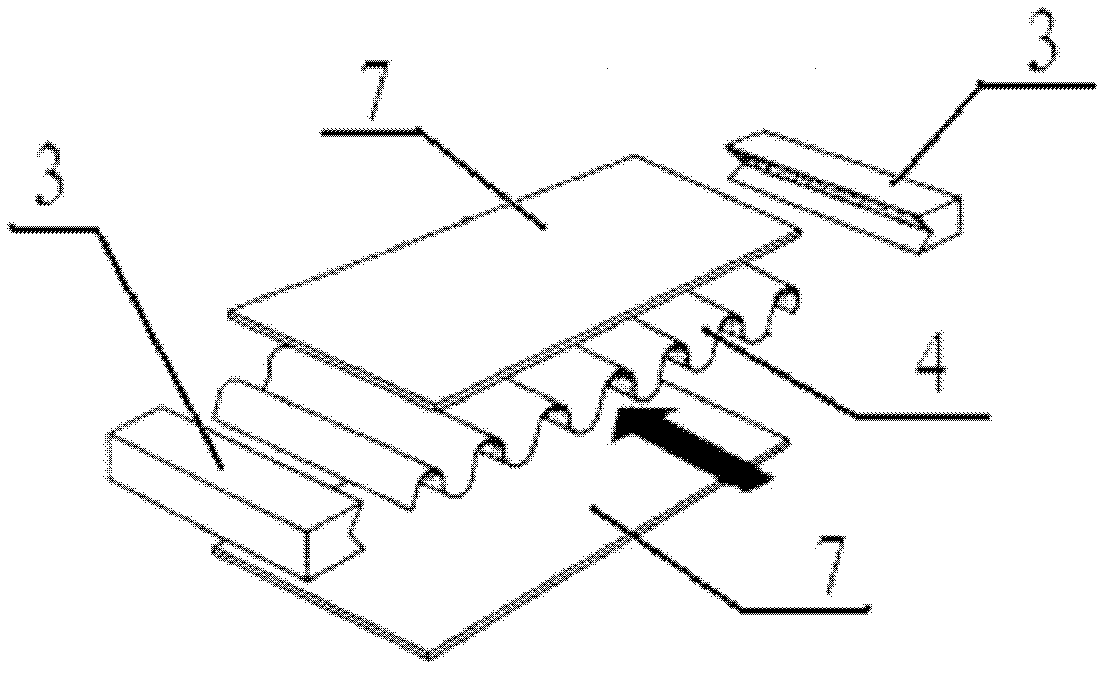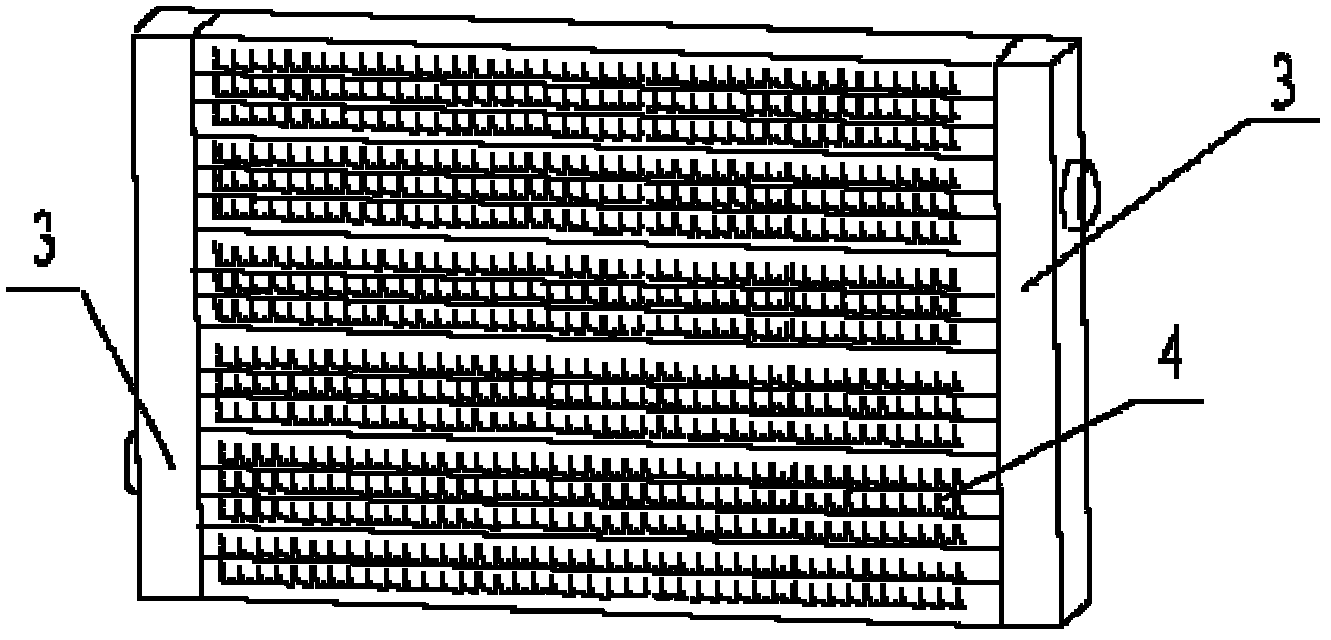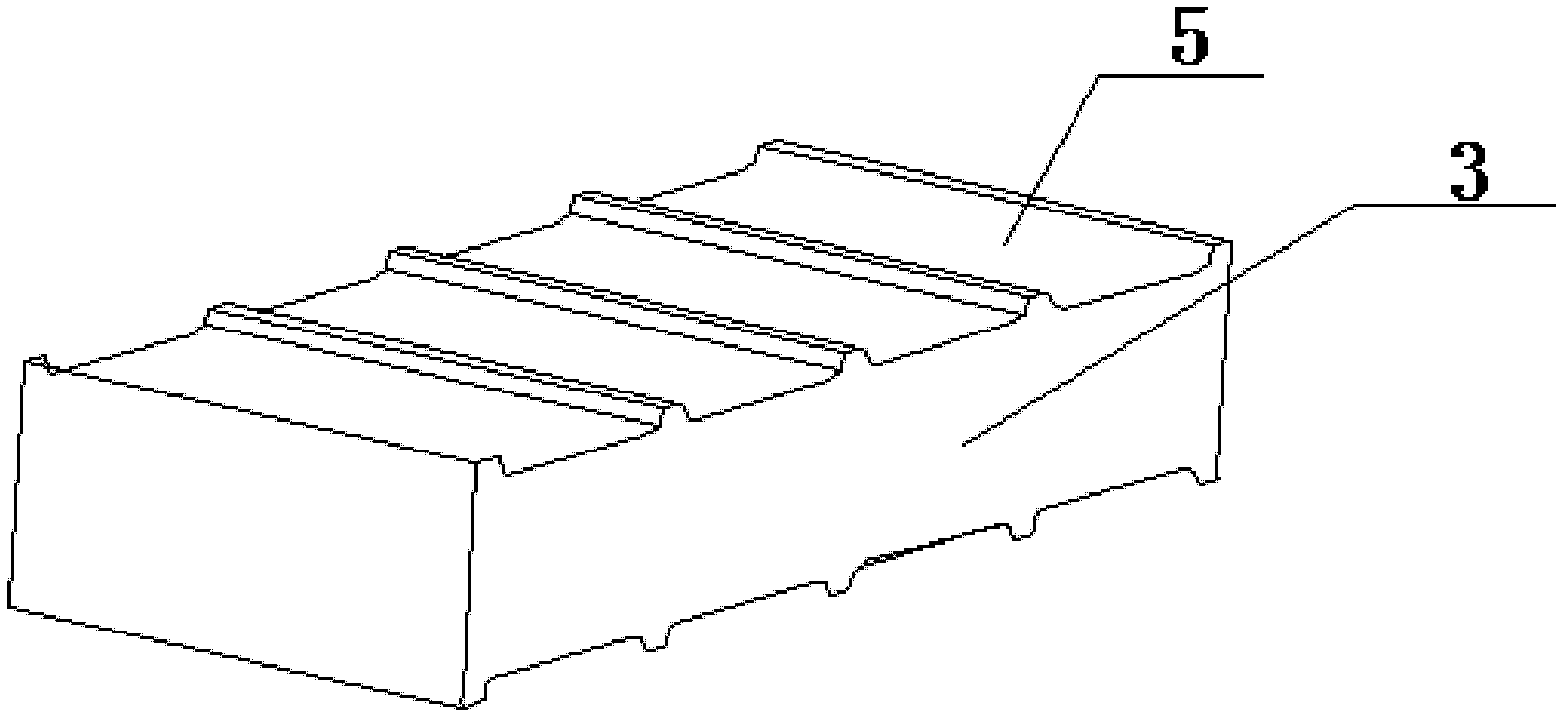Novel tube-fin type heat exchanger
A tube-and-belt heat exchanger technology, applied in the direction of heat exchanger type, heat exchanger shell, indirect heat exchanger, etc., can solve the problems of low strength, desoldering, unsuitable for small batch production, etc., to achieve guaranteed The effect of overall strength and cost reduction
- Summary
- Abstract
- Description
- Claims
- Application Information
AI Technical Summary
Problems solved by technology
Method used
Image
Examples
Embodiment Construction
[0019] The preferred embodiments of the present invention will be described below in conjunction with the accompanying drawings. It should be understood that the preferred embodiments described here are only used to illustrate and explain the present invention, and are not intended to limit the present invention.
[0020] Such as Figure 2-6 As shown, the new tube-and-belt heat exchanger includes a water inlet chamber, a water outlet chamber, and a core body. The core body includes an upper composite plate 1, a lower composite plate 2, fins 4, and a seal 3. The fin layer composed of fin 4 and the seal layer composed of seal 3 are fixedly connected between the plates 2. By changing the channel direction of the adjacent fin layer and seal layer, and continuously stacking, a new type of tube is formed after brazing. Belt heat exchanger. The fin layer is fixedly connected with side-by-side long flat tubes 6 on the dividing plate 7, and every fin layer is formed by 2-5 long flat t...
PUM
 Login to View More
Login to View More Abstract
Description
Claims
Application Information
 Login to View More
Login to View More - R&D
- Intellectual Property
- Life Sciences
- Materials
- Tech Scout
- Unparalleled Data Quality
- Higher Quality Content
- 60% Fewer Hallucinations
Browse by: Latest US Patents, China's latest patents, Technical Efficacy Thesaurus, Application Domain, Technology Topic, Popular Technical Reports.
© 2025 PatSnap. All rights reserved.Legal|Privacy policy|Modern Slavery Act Transparency Statement|Sitemap|About US| Contact US: help@patsnap.com



